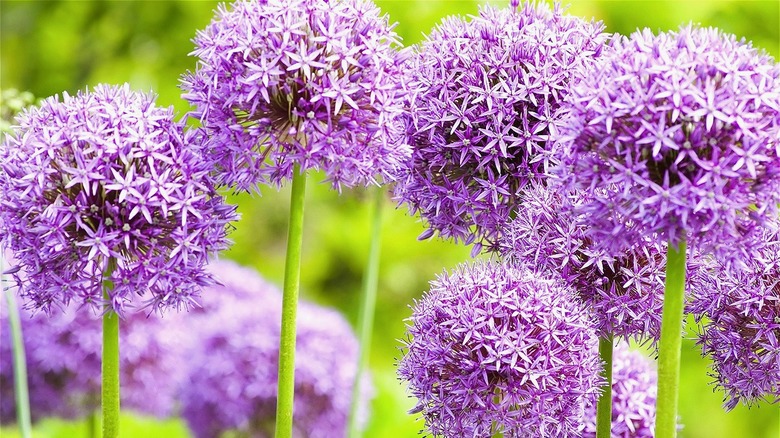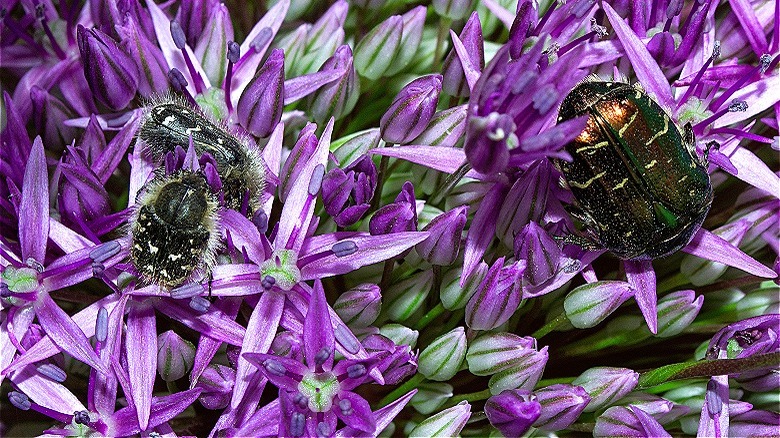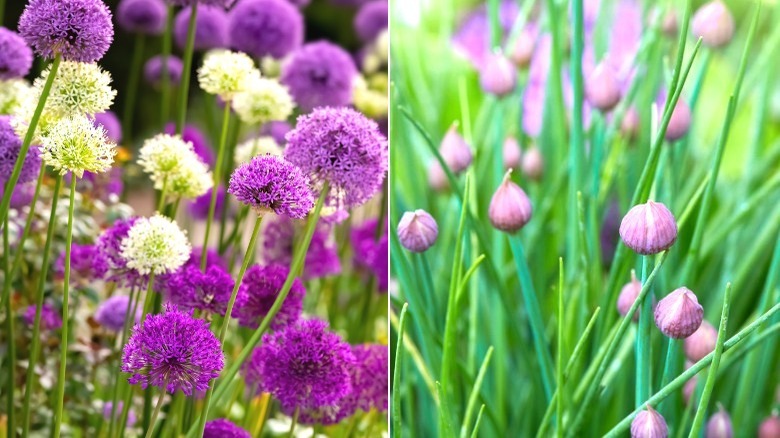Why Growing Alliums Near Each Other Isn't A Good Idea
Allium, or garlic in Latin, is a genus of flowering plants that extends far beyond just the characteristic flavor and aroma of cultivated garlic, a culinary favorite. Rather, it includes a diverse family of onions, chives, leeks, scallions, shallots, and more. Thanks to their pungent smell, alliums make excellent companion plants, as they help keep pests, such as aphids, snails, mealybugs, and slugs, away when interplanted with vegetables and next to certain flowers like roses. So it's no wonder that gardeners assume their shared characteristics will foster mutual growth benefits when these alluring allium members are planted side by side — but not so.
Unfortunately, matters aren't this straightforward in the gardening world, as allium plants make poor companions for their very own brethren. While they usually perform well at repelling insects, they turn into hotbeds for thrips and onion maggots when grouped together. Moreover, their common growth requirements turn them into competitors for nutrients, which hampers their health and vitality in the long run.
Heightened risk of disease transmission
As is common among various plant families, allium varieties share a common susceptibility to several pests and diseases that magnify greatly when these plants are cultivated in close proximity. For instance, while onions deter brassica pests like cabbage, their strong odor attracts onion maggots and rust that can spread quickly in a concentrated planting environment. Similarly, onion flies flock to allium clusters, with leeks being the only exception due to their collective smell, possibly stunting all future plant growth.
Moreover, crowded allium beds provide an ideal setting for the spread of diseases through physical contact, windborne spores, or insect vectors. For example, downy mildew, a fungal disease common to all allium varieties, survives in the soil during the winter and spreads as spores through the new growth season, especially in areas recently planted with onions. Similarly, garlic and onion bunches will likely contract fungal diseases like pink root and fusarium bulb rot, which can rapidly infect and damage the entire patch. Following crop rotation and dispersing alliums throughout the flower bed should improve pest management.
Intense competition for resources
While planting alliums together might appear efficient because of their common requirements and growth patterns, it can inadvertently lead to intense competition for essential resources. As these plants share similar superficial root structures, such as tubers and bulbs, they end up drawing nutrients from the same soil reserves. Matters worsen in densely packed allium areas as they may quickly deplete resources from the top layer.
To illustrate, both onions and garlic have shallow roots that feed on the moisture present in the topsoil. Additionally, both allium varieties desire sun exposure, which can intensify the resource competition between the two, making the situation especially precarious as their growth times majorly overlap. Consequently, such resource scarcity may kick in a vicious cycle of nutrient deficiency, hindering the plants' ability to mature properly and lowering the amount and quality of the harvest. So, it's ideal to pair alliums with other varieties, such as brassicas, carrots, cucumbers, marigolds, and celery, to maintain vibrant and healthy gardens.


